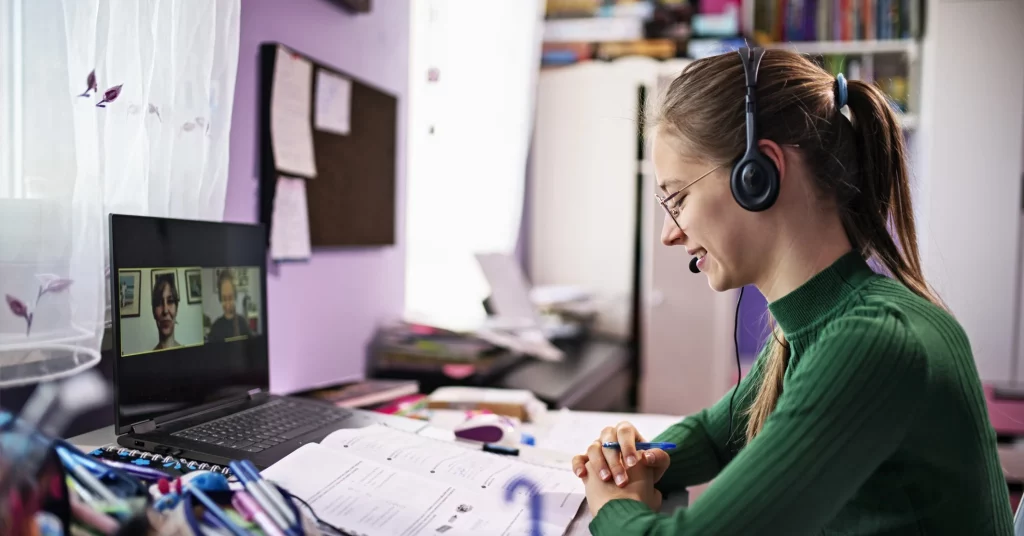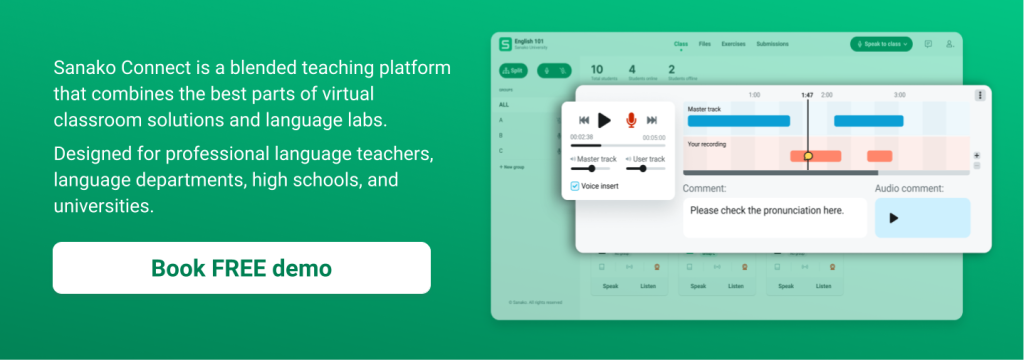The recent Covid-19 pandemic has undoubtedly been one of the most significant disruptions to global language teaching and learning. Particularly in the US, where governors and legislatures closed 124,000+ public schools in 48 states during the first part of 2020, moving language teaching online. How has covid-19 pandemic changes language teaching in the short-term and in the long-term?
We spoke to language teachers from Newton North High School in Massachusetts and Cannon School, North Carolina to find out how things had changed and discovered some unexpected silver linings. Read on to find out the details and get ideas how to prepare for the future.
Initial difficulties in moving language teaching online
The most obvious and significant change is, of course, the move from face-to-face classroom delivery to entirely online provision. Educators from both schools detailed how language teaching departments quickly developed timetables to include both synchronous and asynchronous online teaching slots alongside regular remote office hours and student check-ins.
Claudia Velandia, Upper School World Languages Department Chair from Cannon School, NC reiterated that such plans were regularly reviewed and amended in the light of parent/student feedback to ensure that they didn’t become “boring or monotonous.” But Nancy Marrinucci, World Languages Department Chair of Newton North High School, had just two 30 minute slots a week for virtual meetings with students, in which questions were answered and additional independent learning tasks were set.
Marrinucci noted that remote delivery via Google Meet, Teams and Zoom frequently made “language teaching very difficult” with periods of silence and occasional behaviour issues. She (and her colleagues) had, for example, found it particularly difficult to monitor learning across numerous online break-out rooms. Velandia concurred, commenting that she missed the opportunities to “pick up on the signals” in the classroom that helped to direct and inform her teaching.
But perhaps most notably, Chris Wood from Newton North High School highlighted that opportunities to develop spontaneous, productive language skills, especially speaking, had “disappeared” with online lesson delivery. As a result, his school had deliberately prioritised opportunities for students to record themselves talking before submitting for teacher feedback. Claudia Velandia agreed, noting that online synchronous speaking activities “became monotonous and students quickly became bored.”
For Marrinucci, these examples also highlighted how online delivery made it significantly easier for teachers to support students with inputs (e.g providing reading and listening tasks to work through) rather than to receive outputs of completed work. Student outputs, she felt, “had really suffered” during the pandemic. She also noted the challenge of creating tasks that enabled students to produce “work that’s a true reflection of their actual proficiency level”, given the array of support available at home.
The “new” role for language teachers
As well as changing the method of teaching delivery, the pandemic has also (temporarily at least) changed the role of the teacher in language teaching. Educators identified that their roles were “radically different” and that they were now charged with providing students with a variety of ways (via speaking, listening or writing tasks) to progress through a particular topic. As Chris Wood noted: “We’re increasingly playing the role of content curators – supplying materials and resources for students to complete independently.”
Educators also identified other new challenges that they had been called to address to support online teaching and learning. Claudia Velandia of Cannon School, NC, saw an “increasingly heavy workload” for colleagues as they constantly searched for and developed new online materials for students. Educators are also dealing with a range of health issues as they try to “keep going” at the same time as looking after their students, their own children and responding to family emergencies.
However, and perhaps as a result of these changes / challenges, working through the pandemic has also clearly reinforced some key fundamentals of language teaching. Reduced contact time with students has certainly forced teachers to prioritise. As Nancy Marrinucci put it: “It makes our pedagogical mission very clear – we must focus on what is essential. What do we need students to learn this week and what skills do we want them to practice?” To guide this approach, both schools reiterated their use of ‘can do’ statements to build key skills, alongside a continued focus on proficiency-based assessment.
Conclusions and the way forward
Educators were also quick to identify a number of unexpected “silver linings”, which they hoped would continue to positively impact their teaching practice moving forwards. Marrinucci highlighted the huge importance of “collaboration between teachers and across language teaching teams” and reiterated a laser focus on driving student outcomes. In North Carolina, Velandia noted that regular check-ins with families and students had helped teachers to get to know their students much better. The sessions also highlighted what was working well in language lessons and where improvements could be made.
Yet, as Chris Wood concluded, these changes need to be embedded across the system rather than just being “a sudden adaptation to an unexpected situation.” He and the other educators agreed that improved online tools were needed to better facilitate and encourage spontaneous, non-rehearsed conversations before online could become the ‘new normal’ for language teaching*.
*To help language teachers better adapt to remote teaching, Sanako has worked with hundreds of US language teachers to develop Sanako Connect, its new browser-based virtual language classroom software. Following language teachers’ feedback, Sanako added a number of new features to give teachers greater visibility of what students were working on during each online learning session. Sanako Connect also now enables teachers to share their screens and webcams with students as well as providing a full range of audio and video communication tools.
If you’d like to find out how Sanako Connect, our new language teaching technology, could support your institution’s language teaching, click here to contact us for a free product demo.

